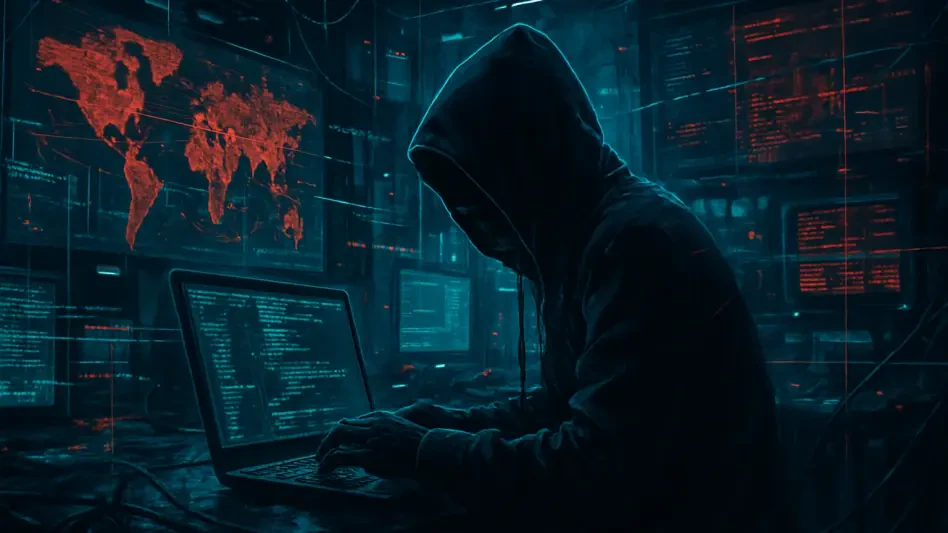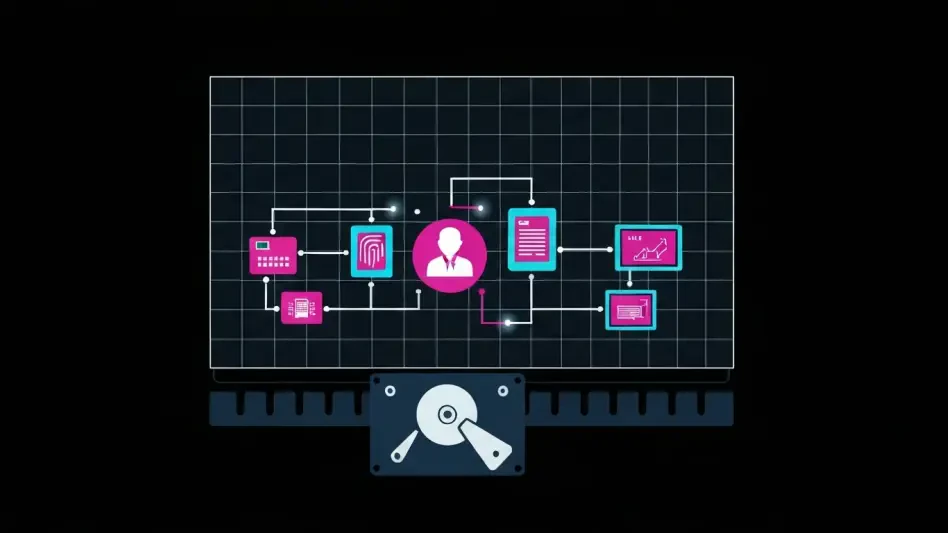In an era where digital battlegrounds are as critical as physical ones, a disturbing development has surfaced involving Hezbollah, the Lebanon-based terrorist organization known for its far-reaching influence, and its sophisticated cyber unit named BQT.Lock. Also referred to as BaqiyatLock, this group operates as a direct extension of Hezbollah’s strategic apparatus under the leadership of a young operative, Karim Fayad, merging ideological zeal with advanced technological tactics to pose a significant threat to global security. Their activities span ransomware schemes to targeted attacks on critical infrastructure, signaling a new frontier in how non-state actors wield power in the digital age.
This emergence of cyber warfare as a tool for Hezbollah underscores a chilling reality: terrorist organizations are adapting to modern challenges by exploiting technology for operational, psychological, and financial gain. BQT.Lock is not merely a band of rogue hackers but a deliberate arm of a larger agenda, focusing on destabilizing adversaries and sustaining Hezbollah amid regional turmoil. The intricate connection to Iran’s cyber network further amplifies the scope of this threat, raising urgent questions about how such hybrid warfare can be countered. As this digital menace grows, understanding the mechanisms behind BQT.Lock’s operations and its leader’s dual existence becomes paramount for international cybersecurity efforts.
Hezbollah’s Digital Strategy Unveiled
Cyber Warfare as a Force Multiplier
Expanding Reach Through Digital Tools
Hezbollah’s adoption of cyber operations marks a pivotal shift in its approach to conflict, leveraging digital platforms to extend its influence far beyond traditional borders. BQT.Lock serves as a prime example of this strategy, utilizing tools like ransomware and distributed denial-of-service (DDoS) attacks to strike at enemies remotely. This method allows the organization to inflict damage with minimal physical risk, targeting critical infrastructure such as airports and communication networks in nations like Israel. The ability to disrupt daily life and sow chaos from a distance amplifies Hezbollah’s presence, making it a persistent thorn in the side of its adversaries. Beyond mere disruption, these attacks are crafted to project power, showcasing a capability to harm even well-defended states through unseen digital channels.
Psychological and Economic Impacts
Beyond operational damage, the psychological toll of BQT.Lock’s cyberattacks forms a core component of Hezbollah’s digital playbook. By targeting high-profile entities—such as Israeli transportation hubs or U.S. election-related websites—the group aims to erode public confidence in governmental security measures. This calculated intimidation reinforces Hezbollah’s image as an omnipresent threat, capable of striking anywhere at any time. Economically, the group’s activities, particularly through ransomware, generate crucial revenue streams. With payments often demanded in cryptocurrencies like Monero for their anonymity, these funds help offset losses from disrupted traditional income sources due to regional conflicts. This dual impact of fear and financial gain positions cyber warfare as a potent force multiplier for Hezbollah’s broader objectives.
Structural Integration within Hezbollah
Embedded Units and Operational Support
Within Hezbollah’s intricate organizational framework, BQT.Lock appears deeply embedded, likely operating under specialized divisions such as the Electronic Unit, tasked with digital warfare and propaganda efforts. Alternatively, connections to Security Unit 900, which focuses on surveillance and counterintelligence, could also play a role in coordinating cyber initiatives. These units provide the infrastructure and strategic direction necessary for sophisticated operations, ensuring that cyberattacks align with broader military and political goals. Support from external allies, notably Iran’s Quds Force Unit 300, further enhances capabilities through training and advanced technology. This integration reflects a deliberate effort to harness digital tools as seamlessly as physical weapons in Hezbollah’s arsenal.
Recruitment Through Ideological Networks
A critical element of Hezbollah’s cyber strategy lies in its ability to cultivate talent through ideological networks like the Imam al-Mahdi Scouts, a youth organization known for indoctrination and recruitment. This platform identifies individuals with potential for specialized roles, grooming them with both religious fervor and technical skills. Karim Fayad’s active involvement in this network highlights how such structures feed directly into cyber units like BQT.Lock. Young operatives are often drawn in with promises of purpose and resistance, their skills later directed toward digital warfare. This pipeline ensures a continuous supply of committed individuals ready to execute Hezbollah’s agenda in the virtual realm, blending loyalty with technical expertise in a dangerous combination.
Karim Fayad: The Man Behind the Mask
A Dual Life of Deception
Public Persona Versus Hidden Operative
Karim Fayad presents a carefully curated image to the world as a student of Computer and Communications Engineering at the American University of Beirut, with a projected graduation in the coming years. Alongside academic pursuits, internships in civilian tech roles paint a picture of an aspiring professional in artificial intelligence and related fields. Yet, beneath this facade lies a starkly different reality: Fayad operates as a key figure in Hezbollah’s cyber operations, orchestrating attacks through BQT.Lock. This duality is not accidental but a strategic choice, allowing access to cutting-edge knowledge and resources under the guise of legitimacy. Such a double life enables the exploitation of civilian environments for covert purposes, blurring the lines between innocent pursuits and malicious intent in a way that challenges traditional counterterrorism measures.
Leveraging Civilian Access for Cyber Gain
The strategic advantage of Fayad’s civilian roles cannot be overstated, as they likely provide unique opportunities to gather intelligence and refine cyber warfare tactics for Hezbollah’s benefit. Access to academic resources, professional networks, and technological infrastructure through a prestigious institution offers a potential gateway to sensitive data or advanced tools. This setup mirrors a broader pattern within Hezbollah of embedding operatives in legitimate spheres to mask their true activities. Whether through learning environments or internships, the skills and connections gained are repurposed to enhance digital attacks, from developing ransomware to targeting critical systems. This exploitation of civilian spaces poses a complex dilemma for authorities seeking to disrupt such networks without infringing on genuine academic or professional freedoms.
Ideological Commitment on Display
Personal Expressions of Allegiance
Fayad’s unwavering dedication to Hezbollah shines through in personal expressions that leave little doubt about his ideological alignment. Social media accounts reveal tattoos honoring Hezbollah leaders and documented visits to the graves of fallen operatives, acts that signify deep-rooted loyalty to the organization’s cause. These public displays are not mere gestures but powerful statements of commitment to a resistance narrative that frames their struggle as divinely ordained. Such personal investment in Hezbollah’s ethos sets Fayad apart from typical cybercriminals, whose motivations often center on financial gain. Instead, these actions underscore a belief system that fuels his role in BQT.Lock, merging personal conviction with the group’s mission to confront perceived enemies through digital means.
Propaganda and Messaging Reinforcement
Beyond personal symbols, Fayad’s online presence actively reinforces Hezbollah’s broader propaganda efforts, aligning closely with narratives promoted by the organization and its Iranian allies. Posts glorifying leadership figures and echoing resistance rhetoric serve to amplify the group’s messaging within digital spaces. BQT.Lock’s own communications often mirror this tone, framing cyberattacks as acts of divine retribution against adversaries. This consistent alignment with ideological themes—rooted in Shiite-Mahdist beliefs—distinguishes their operations from those driven by purely opportunistic or criminal intent. By leveraging social media as a platform for both recruitment and intimidation, Fayad and his group extend Hezbollah’s influence, ensuring that their digital warfare carries the weight of a sacred mission in the eyes of supporters.
The Economic Engine of Cybercrime
Ransomware as a Lifeline
Funding Operations Amid Regional Strife
Amid ongoing regional challenges, including conflicts with Israel and the disruption of traditional supply lines following the collapse of Assad’s regime in Syria, Hezbollah has turned to cybercrime as a vital financial lifeline. BQT.Lock’s ransomware attacks play a central role in this strategy, targeting a wide array of entities to extract payments that bolster the organization’s coffers. These operations are meticulously designed to maximize revenue, often demanding ransoms in cryptocurrencies like Monero to maintain anonymity and evade international sanctions. The funds generated are crucial for sustaining military and political activities when other income sources falter. This shift to digital extortion reflects an adaptive resilience, ensuring Hezbollah can weather economic pressures by exploiting vulnerabilities in global cybersecurity.
Diversifying Revenue Through Digital Means
The scope of BQT.Lock’s ransomware efforts extends beyond isolated attacks, forming part of a broader effort to diversify Hezbollah’s revenue streams in a volatile geopolitical landscape. By hitting targets ranging from governmental institutions to private corporations across multiple continents, the group ensures a steady influx of illicit gains. This financial strategy is not merely opportunistic but a calculated response to the organization’s pressing needs, as traditional funding from state sponsors faces increasing scrutiny and interruption. The ability to generate income through cyber means allows Hezbollah to maintain operational momentum, funding everything from propaganda campaigns to physical operations. As such, ransomware becomes not just a weapon of disruption but a cornerstone of economic survival in challenging times.
Scaling Threats with RaaS
Expanding Impact Through a Service Model
BQT.Lock’s adoption of a Ransomware-as-a-Service (RaaS) model marks a significant escalation in the scope of Hezbollah’s cyber threat, enabling the group to lease its malicious tools to other actors for a fee. This platform operates much like a business, providing ransomware kits to third-party cybercriminals who carry out attacks and share the profits. Such a model exponentially increases the reach of Hezbollah’s digital operations, as it no longer relies solely on its own operatives to execute attacks. The use of cryptocurrency for transactions further obscures the flow of money, complicating efforts to track or disrupt these activities. By franchising its cyber capabilities, BQT.Lock transforms from a singular threat into a facilitator of global cybercrime, amplifying Hezbollah’s influence in the digital underworld.
Global Proliferation of Cyber Dangers
The implications of BQT.Lock’s RaaS platform extend far beyond immediate financial gain, contributing to a proliferation of cyber dangers on a worldwide scale. As more actors gain access to sophisticated ransomware tools, the frequency and severity of attacks on critical infrastructure and businesses surge, creating a ripple effect of instability. This model not only generates revenue for Hezbollah but also serves as a force multiplier by spreading chaos among its adversaries, from Western nations to regional rivals. The decentralized nature of these operations makes attribution and mitigation efforts incredibly challenging for cybersecurity experts. Consequently, BQT.Lock’s service-based approach positions Hezbollah as a central node in a sprawling network of digital threats, with consequences that ripple across borders and industries.
Navigating the Evolving Threat Landscape
Countering a Hybrid Menace
Reflecting on the intricate web of cyber operations orchestrated by BQT.Lock under Karim Fayad’s leadership, it becomes evident that Hezbollah has adeptly adapted to the digital era, blending ideology with technology in a potent mix. The group’s targeted attacks on infrastructure, political entities, and global systems demonstrate a calculated intent to disrupt and intimidate, often leaving lasting psychological scars on affected communities. Their collaboration with Iranian cyber entities has further bolstered their capabilities, creating a networked threat that is difficult to isolate or dismantle. As these operations unfold, they expose critical gaps in international cybersecurity frameworks, revealing how non-state actors can exploit digital vulnerabilities with devastating effect.
Future Steps for Mitigation
Looking ahead, addressing the menace posed by Hezbollah’s cyber arm demands a multifaceted response that transcends traditional defense mechanisms. International cooperation must be prioritized to develop shared intelligence networks capable of tracking and disrupting groups like BQT.Lock before attacks materialize. Investing in advanced cybersecurity technologies to detect and neutralize ransomware threats should be coupled with efforts to close loopholes in cryptocurrency transactions that enable anonymous funding. Additionally, targeting the recruitment pipelines, such as ideological youth networks, could disrupt the flow of talent into these cyber units. Governments and private sectors alike need to collaborate on building resilient systems while raising awareness about the dual civilian-military roles operatives often play. Only through such comprehensive strategies can the persistent and evolving danger of Hezbollah’s digital warfare be effectively curtailed, safeguarding global stability in an increasingly connected world.








